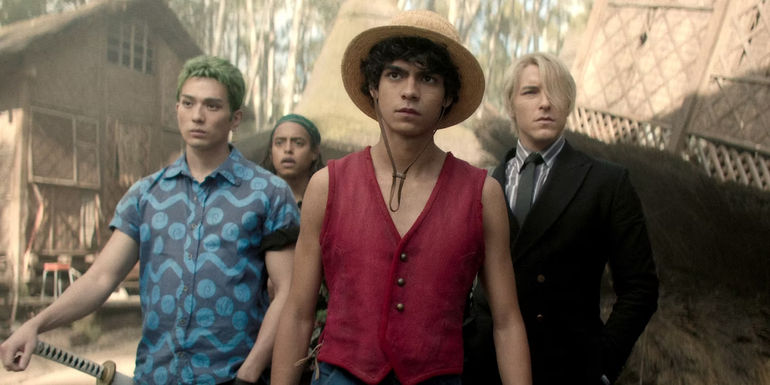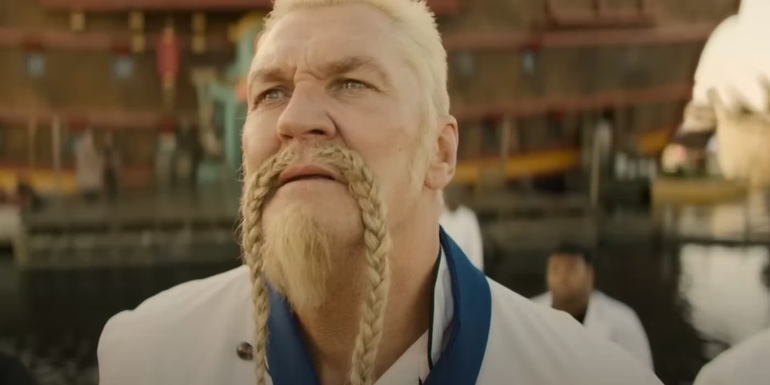
8 Reasons Why Live-Action Anime TV Shows Are Better Than Movie Adaptations

Live-action TV adaptations of anime have proven to be far more successful in recent history than live-action movie adaptations. While there are successful live-action movie adaptations of anime such as Bleach, the Rurouni Kenshin movies, and Alita: Battle Angel, the overwhelming majority of live-action movie adaptations of anime tend to perform poorly, both critically and commercially. In certain cases, there have been live-action anime movies that ruined their source material because of how inaccurate they were, and the poor pacing of their respective storytelling. While One Piece, Alice in Borderland, and Yu-Yu Hakusho have fared much better with audiences, their common denominator is that they're TV shows. One Piece season 2 being greenlit so quickly after season 1's release demonstrated that TV is the best way to adapt anime/manga. While movie adaptations can work, they face many challenges and obstacles that are intrinsic to film's more self-contained narrative structure than that of TV in that TV shows are designed to last as long as possible, and good movies should tell their stories as succinctly as possible in as few entries as possible. With Avatar: The Last Airbender's TV adaptation on the way, the growing trend of TV anime adaptations is a good thing.
Live-Action Anime TV Shows Have A Smaller Barrier Of Entry
Netflix, Crunchyroll, and Hulu are far more convenient than a trip to the movies. A huge advantage that TV adaptations have over movie adaptations of anime is their convenience. Although the primary purpose of going to the movie theaters is to enjoy the movie-going experience, a huge risk involved is the feeling of wasting one's time if the movie in question doesn't live up to expectations. Live-action TV adaptations of anime circumvent this entirely by way of audiences having the freedom to switch to something else in the event they aren't too impressed with the show. Furthermore, episode guides exist to help viewers decide which episodes to watch and which to skip to maximize their viewing experience.
Yusuke Urameshi aims his spirit gun in the YuYu Hakusho anime
Actors In Live-Action Anime TV Shows Can Age With The Characters
A staple of most anime is their reliance on time skips to enhance the story and further develop the characters. After a challenging story arc has been completed or the characters have defeated a powerful foe, anime and manga will advance their stories into the future to show the arduous nature of their journey. Movie adaptations would spend money on unconvincing makeup to make them look the part, hiring new actors to replace them if they age out, or skipping crucial arcs entirely. TV adaptations of anime would benefit from time skips because the actors could naturally age with their characters, thus adding to more authentic and faithful portrayals.
Jun Shison in Kurama's demon fox form in YuYu Hakusho
Live-Action Anime TV Shows Use Original Voice Actors
Movie adaptations of beloved anime and video games such as The Super Mario Bros. Movie and the Sonic the Hedgehog movies relied on famous A-list actors to voice the movies' respective iconic characters to guarantee more people saw the movies. While the strategy makes sense, it also isolates viewers expecting to hear the original voice actors and actresses reprise their roles for the characters they helped make legendary. Live-action TV adaptations, such as One Piece, have a tendency to avoid this mistake by employing the services of the original voice-over cast for the dubs of their respective series. In the case of One Piece, the entire Japanese voice cast dubbed their characters for Netflix's show to critical acclaim.
The actors for the live-action One Piece and their respective Japanese voice actors
Live-Action Anime TV Shows Use Their Budgets Better
Another disadvantage that live-action movie adaptations of anime and manga suffer from is the uneven distribution of their budgets. Similar to their reliance on A-list actors and actresses to bring in greater audiences, the majority of the budgets go to paying their salaries, thus greatly diminishing resources for convincing CGI, sets, costumes, make-up, and special effects for the fight scenes. In the case of One Piece, each episode cost a purported $18 million to produce, and each episode benefited significantly from this decision. One Piece's live-action adaptation was able to distribute resources into all the right places, and each episode boasted a high degree of quality as a result.
Mackenyu as Zoro, Jacob Gibson as Usopp, Inaki Godoy as Luffy, and Taz Skylar as Sanji walk through Coco village in Netflix's live-action One Piece
More Characters Can Be Included in Live-Action Anime TV Shows
Arguably one of the biggest weaknesses of live-action movie adaptations of anime is the number of characters they can include. Since most major movie productions clock in at roughly 120 minutes of action, there's only so much that producers can realistically include without things feeling messy and incoherent. Live-action TV adaptations don't have this problem, since they can include as many characters as necessary across multiple seasons, and they can spend as much time as necessary developing them evenly. One Piece is a prime example, as One Piece season 2 will include Smoker, despite him being absent from the first season.
Craig Fairbrass as Zeff looks off-screen in One Piece
Character Actors Tend To Be More Believable In Live-Action Anime TV Show Adaptations
While movie adaptations of anime and manga have relied on big-name Hollywood stars to bring in larger audiences, the actors tend to be more famous than their respective characters, thus making it harder to believe them in their roles. Character actors or actors who primarily work in TV tend to fare much better in TV adaptations of anime because their star power, or lack thereof, doesn't overshadow the character in question. Furthermore, in cases like Mackenyu (One Piece's Zoro) or Taz Skyler (One Piece's Sanji), the actors portray their characters so well that they often enjoy significant boosts in popularity, thus redirecting audiences to their respective TV shows, and casting a greater light on the source material.
Taz Skylar as Sanji in Netflix's One Piece live-action show
Live-Action Anime TV Shows Have Time For Filler
One of the greatest strengths of live-action TV show adaptations of anime is that they can lean more into their source material's filler and otherwise less important characters and story arcs. This is not only a respectful nod to the source material the shows are adapting, but they also help expand the stories and characters in ways the anime or manga can't. Movies don't have time for filler, and expository dialogue bogs down the viewing experience, so they're often forced to skip details or information that provides more context for the story. TV adaptations can benefit from filler as it is often a great way to expand the characters' backstories.
Iñaki Godoy as Monkey D. Luffy stretching his cheek in Netflix's One Piece live-action show
Live-Action Anime TV Shows Offer More Room To Develop Characters and Arcs
Live-action TV adaptations greatly benefit from including multiple story arcs and characters, since they can flesh them out at a much more manageable pace than movies. Movies have a finite number of minutes to hit the respective adaptation's key moments, introduce their key characters, and still tell an engaging story all without making things feel rushed or forced. TV theoretically has infinite time via multiple seasons, thus allowing them to introduce as many relevant characters as necessary and even spend time developing filler. TV adaptations of anime still have to be mindful of time, but they can get away with moving at a slower pace.
Jacob Romero as Usopp using his slingshot in Netflix's One Piece live-action show















